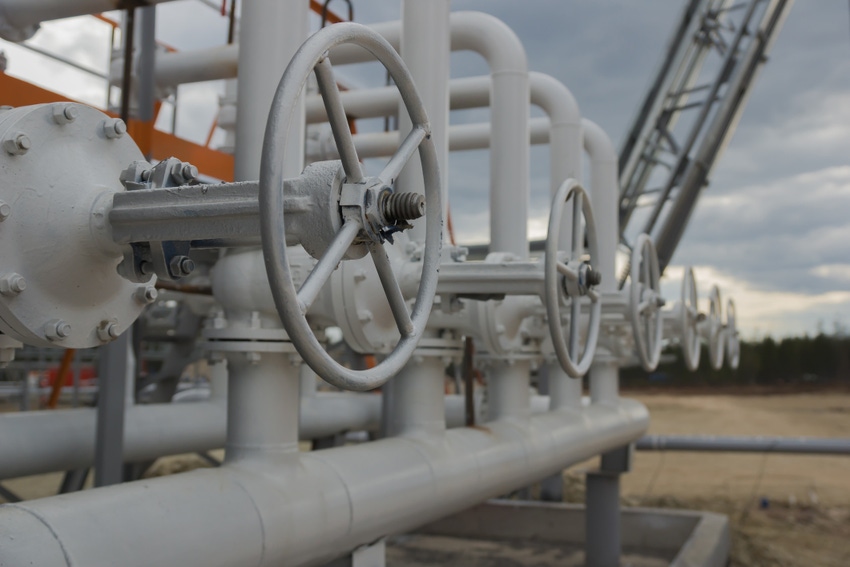How Digital Twins Can Make Decarbonization a Reality in the Oil and Gas Industry
For today’s oil and gas companies, digital twins offer untapped potential to decarbonize the leading source of their emissions — field production

Companies across industries and geographies have been tasked to decarbonize for decades. However, in recent years net-zero commitments have spiked—according to the United Nations, decarbonization goals across the public and private sectors doubled in less than a year in 2020. And while promising progress has been made, just one-third of all companies with net-zero targets met the U.N.’s Race to Net Zero “starting line” criteria in 2022. This means some organizations have not formally announced their 2050 promise, shared their long-term and short-term actions within a year of joining the campaign, acted accordingly to reach their interim net-zero targets, and/or formally published annual decarbonization reports detailing their short-term and long-term target progress.
All of that to say is every corporate and government leader should, now more than ever, address their decarbonization strategies — as the public eye is only increasing focus on their net-zero ambitions. For most enterprises across sectors, decarbonization methods go hand in hand with digital transformation tactics. Solutions like advanced analytics, artificial intelligence, IoT sensors and more can help organizations enhance their operational efficiency, leading to less waste, electricity consumption, fuel needed for transportation and beyond. This collectively diminishes carbon footprints—not to mention improves cost reductions and profit margins.
In the energy industry, digital twins are particularly standing out for their ability to help reduce overall emissions and drive efficiencies. More specifically, digital twins of oil and gas fields have shown significant promise.
The Role of Oil and Gas Field Digital Twins
But where exactly do digital twins come into play in oil and gas field production—and how can they inherently help reduce carbon emissions? As virtual replicas of the physical oil and gas fields, digital twins can provide asset teams with invaluable details on real-time operations and optimize production such that companies can compile information and establish operational tactics to pinpoint areas of excessive emissions and curb them.
These digital twins must be developed with an integrated architecture and enabled with vast amounts of data tapping into an array of physical and digital assets. These highly specialized field-level twins provide field production teams with an accurate, holistic view of their field’s subsurface, wells, and surface infrastructure as well as the various interconnected intelligent solutions and equipment. They can simulate real-time scenarios such as fracking to determine the well viability, identify associated costs, scheduling, increase production, ensure workplace safety and analyze potential carbon emissions. Digital twins can also virtually test, monitor and control equipment of artificial lift or injection operations.
Challenges in the Field
Despite the urgent need to reduce emissions originating from oil and gas field production, many O&G operators face long-standing challenges that have delayed or altogether deterred them from implementing field-level digital twins. Field development planning is a multi-faceted issue encompassing a range of related hurdles. First and foremost, it is difficult to locate, reach, and extract reserves—let alone do so with the goal of minimizing carbon emissions.
Oftentimes, companies must test wells and equipment in the field—spending time and money as well as emitting further greenhouse gasses.
Behind the scenes, there are numerous technology issues as well. In most O&G organizations, drilling, completions, geosciences, production, and reserves models are siloed. These models are created, managed and stored using various software and databases and by numerous teams within the organization. This considerably hinders integrated field production efficiency.
All of these challenges are true of conventional and unconventional reservoirs and onshore and offshore fields. However, it’s important to note that offshore fields arguably face more complex barriers that further exacerbate emissions such as bad connectivity hampering digitally enabled tools, limited site teams to manage operations and address ad hoc issues, and complicated supply chains—which is also a barrier faced in the production of unconventional resources.
How to Incorporate Digital Twins Into Field Production Strategies
With these challenges in mind, how do oil and gas operators seamlessly incorporate digital twin technology into their field production?
Although there is no decisive, simple answer to that question, companies should start with the following tactics:
Form multidisciplinary, cross-organizational teams to collaboratively manage digital twin deployments and help break down preexisting silos across datasets, solutions and processes.
Assess the digital maturity of the oil and gas fields.
Determine guidelines and standardized processes to measure and monitor the kilograms of carbon dioxide emitted per barrel of oil as well as methane emissions.
Partner with external stakeholders, including governments, suppliers and customers, to collectively create sustainable solutions.
With varying fields, reservoirs, operational strategies, and technological capabilities, companies will have to tailor their digital twin deployment plans to their unique set of needs, goals, and existing functions.
Digital solutions have enabled countless enterprises in their net-zero journeys. For today’s oil and gas companies, digital twins offer untapped potential to decarbonize the leading source of their emissions— field production.
Now is the time for leaders to increase investments in field-level digital twins—as well as other digital solutions and renewable energy sources. Oil and gas majors will only continue to face mounting public concern over climate change, increasingly strict government regulations and a volatile global energy market. That’s why enterprises should utilize their crucial free cash flows from their resilient oil and gas assets to responsibly catalyze their digital transformation and energy transition journeys. It will take time, money and manpower to integrate digital twins across such a matrixed environment, but with these virtual simulations, oil and gas companies can propel operational efficiency, increase production, enhance worker safety and ultimately make net-zero emissions a reality.
About the Author(s)
You May Also Like



.png?width=700&auto=webp&quality=80&disable=upscale)
.png?width=700&auto=webp&quality=80&disable=upscale)
.png?width=300&auto=webp&quality=80&disable=upscale)
.png?width=300&auto=webp&quality=80&disable=upscale)
.png?width=300&auto=webp&quality=80&disable=upscale)
